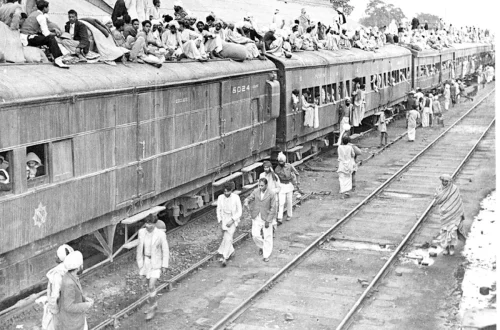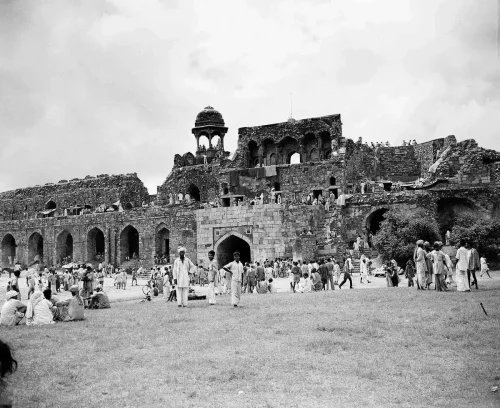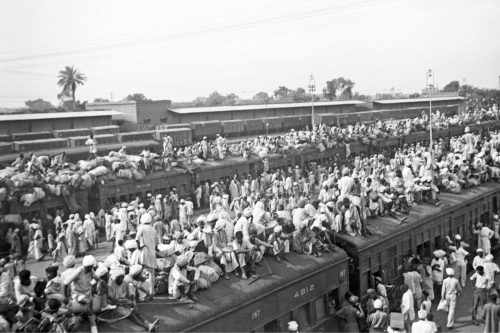What History Teaches Us About Unity in Conflict: Stories of Hope from the 1947 Partition
(Note: Featured image generated using AI)
The year 1947 stands as a heart-rending chapter in the history of the Indian subcontinent, a year that witnessed the birth of two nations but also the unravelling of communities, the tearing apart of families, and the eruption of violence that claimed countless lives.
The Partition of India, a consequence of colonial legacies and political decisions, led to one of the largest mass migrations in human history. Yet, amidst the chaos and suffering, there were acts of courage, compassion, and unity that transcended religious and cultural divides.
In times of turmoil, it is easy to be consumed by the shadows of hatred and division. However, it is equally crucial to remember the moments of light, the instances where humanity rose above communal lines to offer help, shelter, and solace. These stories, though often overshadowed by the narratives of conflict, remind us of the timeless spirit of togetherness that can flourish even in the most challenging times.
Glimpses of humanity amidst chaos
Kuheli Dasgupta, a public health professional currently working with the Government of India, carries within her the echoes of her grandparents’ journey, who lived through the harrowing days of partition.
 The 1947 Partition saw acts of courage, compassion, and unity beyond religion
The 1947 Partition saw acts of courage, compassion, and unity beyond religion
Her grandfather, Bejoy Bhushan Dasgupta, hailed from Goila town in Barishal District, Bangladesh. Orphaned at a young age, he was raised by his maternal grandparents in Kolkata. As the unrest preceding the partition intensified, his brothers, along with extended relatives, decided to leave their homeland in Bangladesh and move to India.
“My grandfather often spoke of how their Muslim neighbours in Bangladesh helped his brothers during the unrest. They arranged for their safe passage to Kolkata, assuring they crossed the Ichamati River without harm,” she tells The Better India, her voice laced with gratitude.
Her grandmother, Renu Kana Dasgupta, originally from Faridpur in Dhaka district, experienced a similar journey. As tensions escalated, her family sought refuge in Kolkata, where they were embraced by neighbours from various communities.
“They would gather to share meals, exchange stories, and simply be in each other’s company, while someone took care of the children when others ventured out in search of livelihoods. These humble acts of kindness and solidarity helped them come together and support one another during times of hardship,” she reflects, her voice imbued with warmth and nostalgia, when asked to shed light on the communal dynamics of that era.
Remembering the light in dark times
One particular memory Kuheli shares is of her grandmother’s family being aided by a Muslim neighbour in Dhaka. “They gave their burkhas to my grandmother’s family so they could disguise themselves as Muslims and leave the country during those stressful times,” she narrates, highlighting the selflessness and solidarity that transcended religious boundaries.
 We should look at stories of communal harmony during conflicts to rekindle the spirit of unity
We should look at stories of communal harmony during conflicts to rekindle the spirit of unity
Growing up hearing these stories, Kuheli is instilled with values of secularism and unity.
“Our nation has faced difficult times before, yet we triumphed because we stood united, believing in one another’s humanity. Throughout my life, I have been blessed with friendships that are not restricted by religious boundaries. These relationships have taught me that in times of adversity, we must look to our shared history, not to sow division, but to rekindle the spirit of unity that once prevailed. When confronted with attempts to undermine our beliefs, we should draw strength from these stories of communal harmony, allowing them to inspire us to uphold our values of inclusivity and mutual respect,” she affirms.
Another tale of survival during conflict
In another story, Namrata Dutta, an English teacher from North Kolkata, shares the moving experiences of her mother, Mira Basu Thakur, who was a 10-year-old girl during the 1947 Partition.
Residing in Park Circus, Kolkata, with her family, they initially found refuge with Muslim neighbours as communal tensions rose. However, as the situation worsened, their non-Hindu friends arranged for their safe passage to Hindu-majority areas in Kolkata.
 The 1947 Partition led to the largest mass migrations in human history
The 1947 Partition led to the largest mass migrations in human history
“Initially, my mother and her family took help from Muslim neighbours during the 1947 unrest in Kolkata. They offered them shelter and protection, embodying the spirit of unity amidst adversity,” she narrates.
“As the situation deteriorated and safety could no longer be guaranteed, their non-Hindu friends, who had been helpful in their initial protection, advised them that it was no longer safe to remain in that area,” she adds.
Recognising the escalating danger, these friends took decisive action to ensure the family’s safety. They arranged for trucks to transport them, coordinated with military personnel to facilitate safe passage, and personally escorted them to Hindu-majority localities in Kolkata.
“Upon reaching Central Kolkata, my mother was taken in by relatives, providing them with a semblance of stability until the volatile situation began to normalise,” adds Namrata.
The narratives of Kuheli and Namrata serve as reminders of the strength found in unity during times of adversity. In a world where divisions often seem insurmountable, these stories urge us to look beyond religious identities and recognise our shared humanity. “We have faced difficult times before in our country, but we overcame them because we believed in each other,” Namrata aptly puts it.
Edited by Vidya Gowri
News